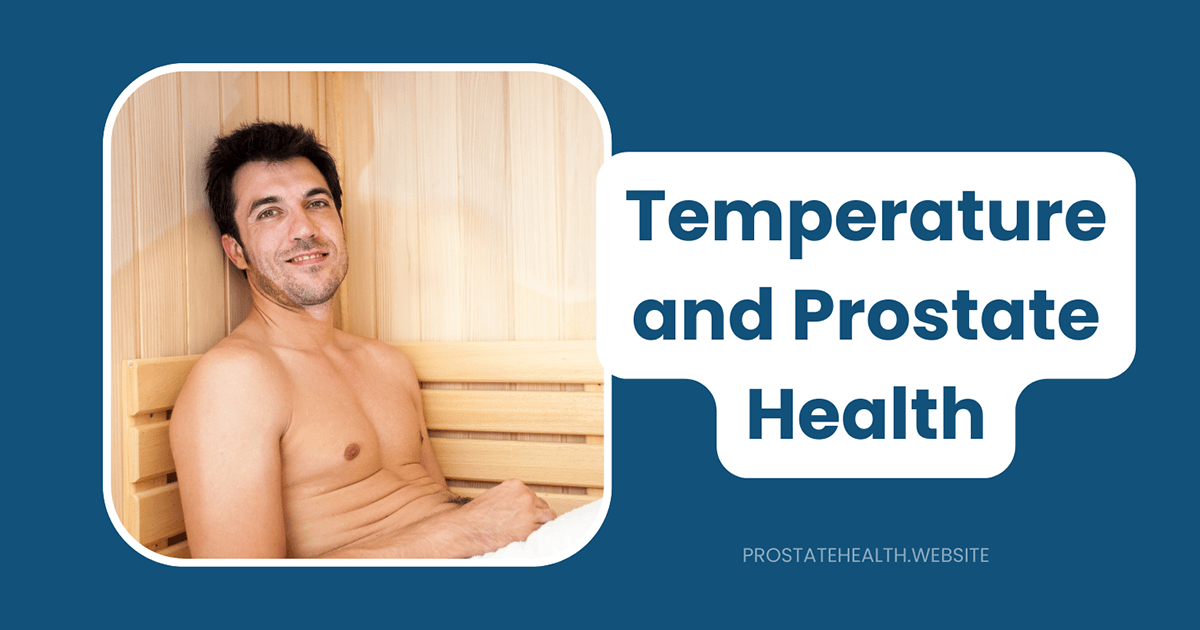How Regular Exercise Reduces Prostate Cancer Risk

When James, a 56-year-old software engineer, received slightly elevated PSA results at his annual physical, his urologist offered some unexpected advice: “Start exercising regularly.” James was skeptical. “I thought he’d recommend medication or some kind of procedure,” he admits. “How could something as simple as exercise make any difference to my prostate?”
As it turns out, there’s compelling science behind this recommendation. Research increasingly shows that regular physical activity may be one of our most powerful tools for reducing prostate cancer risk, slowing disease progression, and improving outcomes for those already diagnosed.
Let’s explore the fascinating science behind how exercise protects against prostate cancer and how you can incorporate this knowledge into your own health strategy.
The Evidence: What Research Tells Us About Exercise and Prostate Cancer
The connection between exercise and prostate cancer has been studied extensively, with increasingly strong evidence supporting its protective effects:
Reduced Risk of Aggressive Prostate Cancer
While the relationship between exercise and overall prostate cancer incidence shows mixed results, the evidence for protection against aggressive, advanced, and fatal forms of the disease is more consistent:
- A comprehensive analysis published in Cancer Epidemiology, Biomarkers & Prevention found that vigorous physical activity is associated with a decreased risk of aggressive prostate cancer.
- The Health Professionals Follow-up Study, which tracked over 47,000 men, found that those over 65 who engaged in vigorous activity had a lower risk of advanced, high Gleason grade, or fatal prostate cancer.
Improved Survival After Diagnosis
For men already diagnosed with prostate cancer, exercise appears to significantly improve outcomes:
- A 2025 study published in ASCO Post found that postdiagnosis exercise was linked to a 25% reduction in overall mortality and an 18% reduction in cancer mortality across multiple cancer types, including prostate cancer.
- Research shows that men who engage in vigorous exercise for more than 3 hours weekly have a 61% reduction in the risk of prostate-specific death compared to less active men.
- A study of men with localized prostate cancer found that brisk walking for more than 3 hours weekly was associated with a 57% reduction in disease progression rates.
Cardiorespiratory Fitness and Risk Reduction
A recent study analyzing data from over 57,000 men found that:
- Increasing cardiorespiratory fitness (CRF) by an average of 3% per year was linked to a 35% reduced risk of developing prostate cancer compared to those whose fitness levels declined.
- Every standard deviation increase in absolute CRF in the moderate fitness group reduced prostate cancer risk by 16%.
How Exercise Fights Prostate Cancer: The Mechanisms Explained
What makes exercise such a powerful tool against prostate cancer? Research has identified several key mechanisms:
1. Hormonal Regulation
Exercise helps regulate hormones that can influence prostate cancer development and progression:
- Testosterone metabolism: Regular physical activity may help optimize testosterone levels and metabolism, potentially reducing the stimulation of prostate cancer cells.
- Insulin and IGF-1: Exercise improves insulin sensitivity and reduces levels of insulin and insulin-like growth factor 1 (IGF-1), both of which can promote cancer cell growth when elevated.
- Sex hormone binding globulin (SHBG): Physical activity increases SHBG levels, which binds to testosterone and reduces the amount of free testosterone available to stimulate prostate cancer cells.
Dr. Kerry Courneya, Professor and Canada Research Chair in Physical Activity and Cancer at the University of Alberta, explains: “Exercise helps create a less favorable hormonal environment for cancer cells to grow and spread. By improving insulin sensitivity and optimizing hormone levels, regular physical activity may help keep prostate cells healthier.”
2. Inflammation Reduction
Chronic inflammation is increasingly recognized as a driver of cancer development. Exercise has potent anti-inflammatory effects:
- Regular physical activity reduces levels of pro-inflammatory cytokines like interleukin-6 (IL-6) and tumor necrosis factor-alpha (TNF-α), which are linked to cancer progression.
- Exercise increases anti-inflammatory molecules that help counteract cancer-promoting inflammation.
- Physical activity helps reduce visceral fat, a major source of inflammatory compounds in the body.
According to a study published in PMC, “Exercise programs can help mitigate chronic inflammation, which is associated with cancer development.”
3. Enhanced Immune Function
Exercise boosts the body’s natural defenses against cancer:
- Natural Killer (NK) cells: Physical activity increases both the number and activity of NK cells, which play a crucial role in identifying and destroying cancer cells.
- T-cell function: Exercise enhances the activity of CD4+ and CD8+ T cells, important components of the immune system’s cancer surveillance.
- Immune cell infiltration: Regular physical activity may improve immune cell infiltration into tumors, enhancing anti-tumor responses.
A 2022 study found that “acute exercise improved NK cell cytotoxic activity and mobilized cytotoxic immune cells in early-stage prostate cancer patients,” with NK cell activity against prostate cancer cells increasing by 24% following exercise.
4. Oxidative Stress Management
Exercise helps the body better manage oxidative stress, which can damage DNA and contribute to cancer development:
- Regular physical activity enhances antioxidant defense systems that protect cells from oxidative damage.
- Exercise increases expression of genes involved in DNA repair, such as BRCA1 and BRCA2.
- Moderate exercise creates a beneficial hormetic effect—a mild stress that strengthens cellular resilience.
5. Weight Management and Metabolic Health
Maintaining a healthy weight is crucial for prostate health:
- Obesity is associated with more aggressive prostate cancer and worse outcomes after diagnosis.
- Exercise helps reduce visceral fat, which produces hormones and inflammatory compounds that can promote cancer growth.
- Physical activity improves metabolic health, reducing risk factors associated with cancer progression.
According to the Fred Hutchinson Cancer Center, “Excess body fat promotes insulin resistance, which is a potent stimulator of prostate cancer growth. Regular exercise and muscle mass building help control blood sugar and reduce insulin production.”
6. Epigenetic Modifications
Emerging research suggests exercise may influence gene expression in ways that protect against cancer:
- Physical activity can alter the expression of over 180 genes related to cancer risk.
- Exercise may influence DNA methylation patterns in ways that suppress cancer-promoting genes.
- Regular activity may enhance the expression of tumor suppressor genes.
How Much Exercise Is Needed? The Dose-Response Relationship
How much exercise do you need to reduce prostate cancer risk? Research provides some guidance:
Minimum Effective Dose
The 2025 PRESTO-1 clinical trial found that:
- Exercise therapy for 225 to 375 minutes per week demonstrated promising biological activity against prostate cancer.
- Dose levels below 225 minutes per week did not significantly impact prostate cancer biomarkers.
- Based on these findings, researchers recommended 225 minutes per week (about 45 minutes of moderate exercise five times weekly) for further studies.
Intensity Matters
Research suggests that intensity plays an important role:
- Vigorous activity appears to have a stronger protective effect than moderate activity, particularly for advanced and fatal prostate cancer.
- The Fred Hutchinson Cancer Center notes that “a modest amount of vigorous activity, about three hours a week, may substantially improve prostate cancer survival.”
- However, even moderate activity like brisk walking has shown benefits when done consistently.
Consistency Over Time
The protective effects of exercise appear to be greatest when physical activity is maintained over time:
- The cardiorespiratory fitness study found that men who increased their fitness levels over time had greater protection than those whose fitness declined.
- This suggests that making exercise a consistent part of your lifestyle is more important than short-term, intense exercise programs.
Types of Exercise for Prostate Health: Building a Balanced Program
A comprehensive exercise program for prostate health should include several components:
Aerobic Exercise
Aerobic or cardiovascular exercise appears to have the strongest evidence for prostate cancer protection:
- Walking: Brisk walking is accessible to most men and has shown benefits in multiple studies.
- Cycling: Indoor or outdoor cycling provides excellent cardiovascular benefits with low joint impact.
- Swimming: A full-body workout that’s gentle on joints.
- Jogging/Running: Offers higher intensity for those able to participate.
- Rowing: Combines cardiovascular and strength benefits.
Aim for at least 30 minutes of moderate-intensity aerobic activity most days of the week, working up to 45 minutes five times weekly if possible.
Strength Training
Building and maintaining muscle mass offers important benefits:
- Helps maintain healthy testosterone levels
- Improves insulin sensitivity
- Supports overall metabolic health
- Counteracts muscle loss from aging and some prostate cancer treatments
Include strength training 2-3 times weekly, focusing on major muscle groups with exercises like squats, lunges, chest presses, rows, and shoulder presses.
Flexibility and Balance
While not directly linked to prostate cancer risk, these components support overall fitness and make other exercises safer:
- Yoga or stretching to maintain flexibility
- Balance exercises to prevent falls and injuries
- Activities like tai chi that combine multiple fitness elements
Starting an Exercise Program: Practical Advice for Men
If you’re currently inactive, here’s how to safely begin an exercise program:
Get Medical Clearance
Before starting a new exercise program:
- Consult with your healthcare provider, especially if you have existing health conditions
- Discuss any prostate-specific concerns or limitations
- Consider a baseline fitness assessment
Start Gradually
- Begin with short sessions (10-15 minutes) of moderate activity
- Gradually increase duration before increasing intensity
- Listen to your body and avoid overexertion
Find Activities You Enjoy
- Exercise adherence is highest when you choose activities you find pleasurable
- Consider group classes or team sports if you enjoy social interaction
- Experiment with different activities to find what works for you
Track Your Progress
- Use a fitness tracker, app, or simple journal to monitor your activity
- Set realistic, progressive goals
- Celebrate achievements to maintain motivation
Consider Professional Guidance
- A certified fitness professional can design a program tailored to your needs
- Physical therapists can address specific limitations or concerns
- Cancer exercise specialists have specific training for men with prostate cancer
Special Considerations for Men with Prostate Concerns
If you’ve been diagnosed with prostate cancer or have other prostate conditions, additional considerations apply:
During Active Treatment
- Exercise is generally safe and beneficial during prostate cancer treatment
- Modify intensity based on energy levels and side effects
- Focus on maintaining function rather than improving performance
- Communicate regularly with your healthcare team about your exercise program
According to ZERO Cancer, “One study found men who exercise the equivalent of only one to three hours of walking each week have an 86% lower risk of aggressive prostate cancer.”
After Prostatectomy
- Pelvic floor exercises (Kegels) can help manage urinary incontinence
- Gradually return to activity following your surgeon’s guidelines
- Focus on rebuilding core strength and stability
During Hormone Therapy
- Resistance training becomes especially important to counteract muscle and bone loss
- Weight-bearing exercise helps maintain bone density
- Cardiovascular exercise can help manage side effects like fatigue and weight gain
For BPH (Enlarged Prostate)
- Regular exercise may help manage symptoms of benign prostatic hyperplasia
- Some men find that certain activities (like cycling) may temporarily worsen symptoms
- Staying hydrated during exercise is important, but timing fluid intake to avoid nighttime bathroom trips
Real-World Success: Men’s Experiences with Exercise and Prostate Health
While individual experiences vary, many men report positive outcomes from increasing their physical activity:
Robert, 62, risk reduction: “After my brother was diagnosed with prostate cancer, I decided to take my health more seriously. I started walking 30 minutes daily and added strength training twice weekly. Two years later, my PSA levels have remained stable, and I feel better than I have in years.”
Michael, 70, post-diagnosis: “When I was diagnosed with early-stage prostate cancer, I chose active surveillance and committed to exercising regularly. Five years later, my cancer hasn’t progressed, and my doctor believes my exercise routine has played a significant role.”
James, 58, managing BPH: “My enlarged prostate was causing frequent nighttime bathroom trips. Since starting a regular exercise program, my symptoms have improved noticeably. I’m sleeping better and feeling more energetic during the day.”
Beyond Exercise: A Comprehensive Approach to Prostate Health
While exercise is powerful, it’s most effective as part of a comprehensive approach to prostate health:
Nutritional Synergy
Exercise and nutrition work together to protect prostate health:
- A diet rich in fruits, vegetables, whole grains, and healthy fats complements the benefits of exercise
- Specific foods like tomatoes (lycopene), cruciferous vegetables, and fatty fish may offer additional prostate protection
- Staying well-hydrated supports both exercise performance and prostate health
Stress Management
Chronic stress may impact hormone levels and immune function:
- Exercise itself is an excellent stress reducer
- Consider adding mind-body practices like meditation or deep breathing
- Adequate sleep is crucial for recovery and overall health
Regular Screenings
Early detection remains important:
- Discuss appropriate prostate cancer screening with your healthcare provider
- Regular check-ups can identify issues before they become serious
- Be aware of family history and other risk factors
Conclusion: Making Exercise a Priority for Prostate Health
The evidence is clear: regular physical activity is one of the most powerful tools available for reducing prostate cancer risk and improving outcomes for those already diagnosed. Unlike many medical interventions, exercise is accessible, affordable, and offers numerous additional health benefits beyond prostate protection.
Dr. Neil Iyengar, a medical oncologist at Memorial Sloan Kettering Cancer Center, summarizes it well: “Exercise is medicine. The data supporting physical activity for cancer prevention and control is so compelling that it should be considered a standard part of cancer care.”
Whether you’re currently active or just beginning your fitness journey, increasing your physical activity level represents one of the most important steps you can take for your prostate health and overall wellbeing. Start where you are, progress gradually, and remember that consistency matters more than intensity, especially at the beginning.
Your prostate—and your entire body—will thank you for making exercise a priority.






